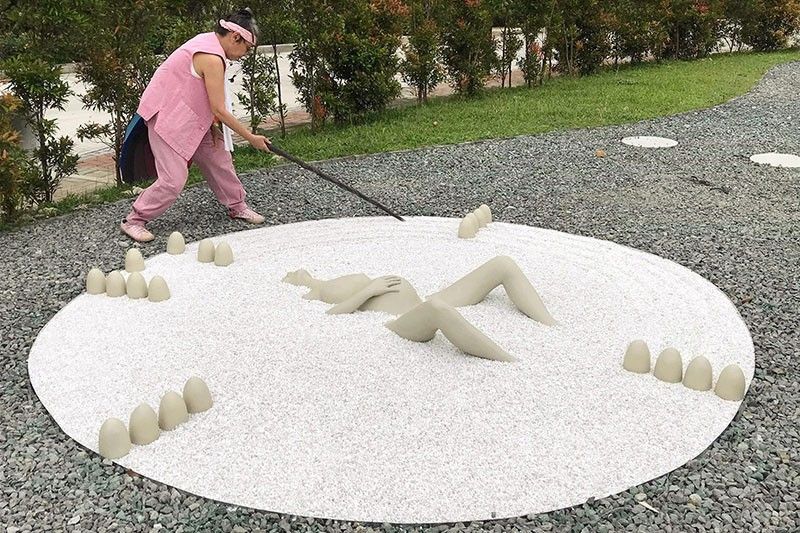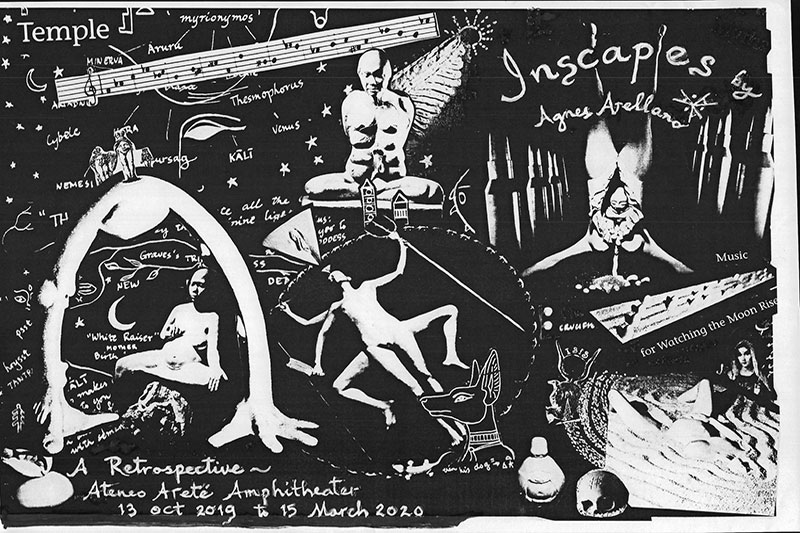Inscapes that create artistic coherence


I’ve known premier sculptor Agnes Arellano for over half-a-century, since she was knee-high at their clan compound on what was then Tuberias St. in San Juan, right across the Ejercito manse.
As a lifetime family friend, I’ve been her kuya — with memories that date back to her and her sisters Honey and Citas’ high school days at St. John’s Academy, all through the time she was one half of the singing duo Twin Echoes, as a UP Diliman coed, thence the founder and proprietor of the Pinaglabanan Galleries that took over her family’s old property, and where she first exhibited her sculptural works besides curating avant-garde shows featuring our most dynamic artists.
Then there were the decades when she hosted poets, Pinikpikan musicians and Pepito Bosch at Blue Ridge B, helping give birth to the long-running poetry journal Caracoa with the Philippine Literary Arts Council or PLAC, and several CD albums with Boy Yuchengco et al.
So familiar have become her seminal works that bloomed in all the gardens she has enhanced with her unique interpretations of myths, divinities, and the sacred feminine. Thus, hearing of a retrospective show she’s been invited to mount, in a setting that can only serve just as excellently as her playground, gladdens this big bro un-quantifiably.

Agnes’ last public art display had four stone goddesses clustered on a grove by the UP Vargas Museum — as her “Project Pleaides” participation in the three-person outdoor exhibit billed as “Lawas” from April till August last year.
Opening on Sunday, Oct. 13, at the Ateneo Areté Amphitheater, is her “Inscapes: A Retrospective,” to last till March 15, 2020. The retro became possible when Agnes received the Ignacio Jimenez Outdoor Installation Grant, care of the Ateneo Art Gallery, with Ma. Victoria “Boots” Herrera as AAG director and chief curator.
Agnes explains that “inscape refers to the underlying design of an object which gives it coherence.” Her creative notes state further:
“For me it is a spatial device that aims to change the way we are accustomed to viewing sculpture, which is a 360-degree circling around an object. In an inscape, one walks into the sculpture. Surrounded by several diverse pieces — on the floor, freestanding, on the walls or hanging from the ceiling, or invisibly by sound, one gleans the underlying meaning of the installation; he ‘gestalts’ it.”
The exhibit recombines pieces culled from four inscapes she created from 1983 to 1996: “Temple to the Moon Goddess” — from a 1983 group exhibit curated by Bobby Chabet at the now defunct Museum of Philippine Art (MOPA); “Myths of Creation and Destruction” — first shown in the Fifth Havana Biennial in 1987; “The Temple of the Sun God” (1990) — exhibited in full only in the galleries of Mitsubishi-Jisho Artium in Fukuoka; and “Three Buddha Mothers and Eshu” (1996) — first shown at the Sixth Havana Biennial.
They are all in white coldcast marble, suitable for outdoor exposure, chosen to best simulate the white of the originals, which were done using the techniques of live casting and direct modelling in plaster of Paris, using plaster as modelling clay.
In the sequence for Areté, the first grouping has “Hermaphroditic Homunculus” (an arch that depicts a neurological diagram of the brain) and “Vesta” (a young mother-to-be on her tree-stump pedestal, with a monitor lizard, symbol of fecundity, on her back). In the new combine, she is shown as a goddess in her own right, underneath the homunculus arch.
The second group has “Yabyum” (Tibetan term for father and mother in erotic embrace), “Eternal Oval” (a cosmic egg formed by a curled-up body), and “Babboldibooda” (a bubble-shaped fat-bellied Buddha figure).
The third group has Arellano’s classic “Haliya Bathing” as the central floor piece depicting the Bicol myth of Haliya, goddess from the moon. Five lines of a musical staff are raked in a circle around Haliya. A sensor will detect movement and the music will play from a speaker near the work. “Music for Watching the Moon Rise” has the “Omphalos” notes raked on a sandbox of crushed marble.
The center alcove has “Angel of Death” (a door of two parts depicting a male upper torso with wings) flanked by “Bronze Bullets” (six giant Armalite bullets, upright and in gleaming bronze). Another alcove combines the figures of “Dea” with her four pairs of breasts and “Eshu” (a floor piece featuring the black, male, Lord of the Crossroads in Cuban santeria). Then there are “Phallic and Iambe” and “Obelisk” (the tallest freestanding piece, made up of skulls and bones piled up closely together). Agnes notes that it could very well be a monument to EJK.
The last group has the frequently exhibited and much-extolled “Carcass-Cornucopia” (now in the collection of the Fukuoka Art Museum) and “Music for Making the Sun Rise” — her second piece of “Sculpture that Composes Music.” Here the notes are human skulls, buried on a line or a space on the raked stave. The melody is predominantly sung by male voices chanting and from Asian indigenous musical instruments from the collection of the late Lucrecia Kasilag, who plays the last note on a triangle.
Many of the pieces are cast from the sculptor’s own body, a technique that blurs the distinction between reality and art, as they are fantasy self-portraits, done at significant points in her life.
Dwelling on the themes of the sacred feminine, Eros, and paradoxes of life and death, male and female, yabyum, yin and yang, Agnes Arellano has drawn inspiration from comparative mythology, archeology, psychology, shamanism and other religious systems.
In the Areté arrangements, these temple fragments can be viewed all together for the first time. One can walk through them in a Zen-garden ambience, free from walls and open to the sky.



















